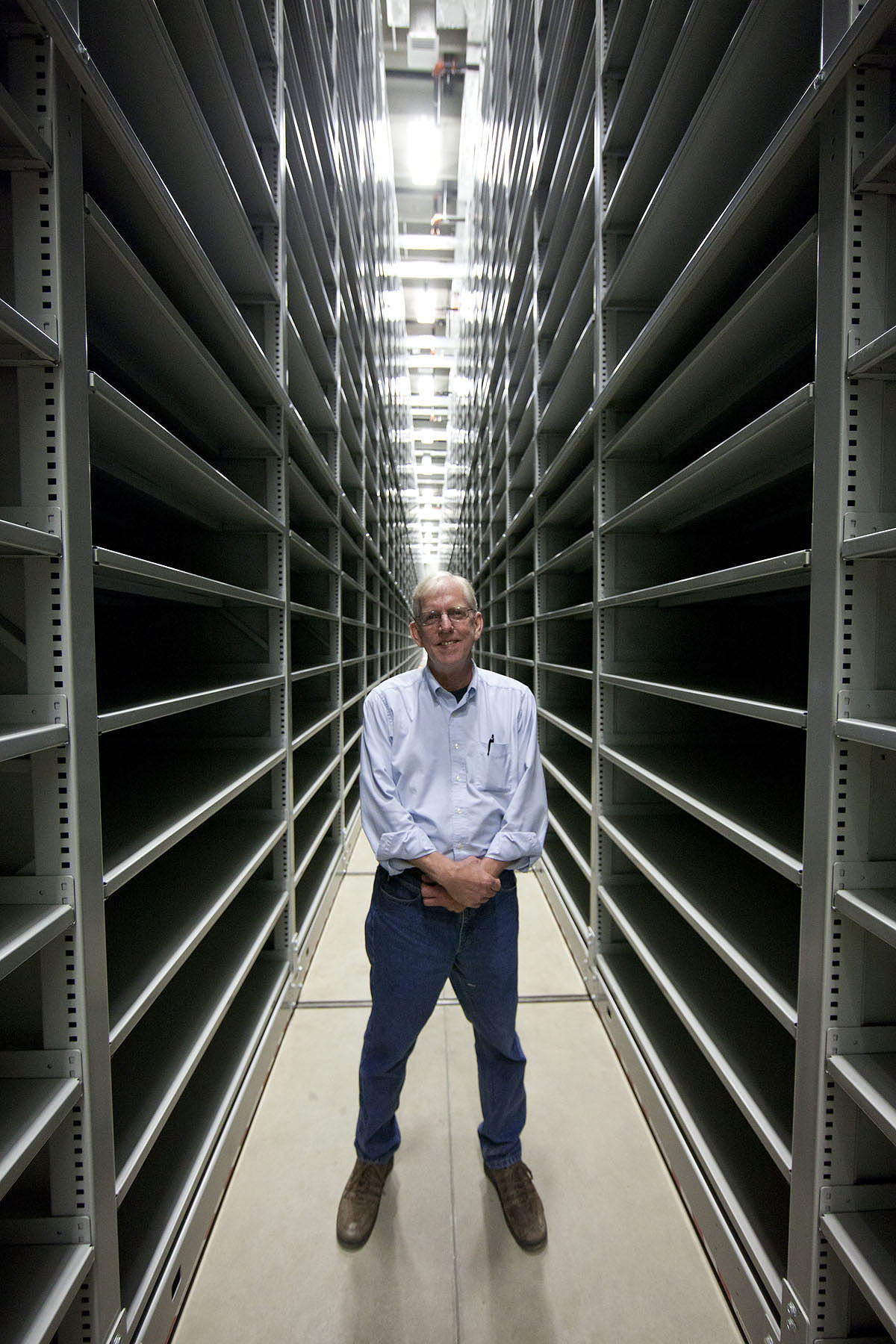July 22, 2011 — Truckloads of books, periodicals, LPs, microfilm and other records began returning to the newly renovated Ivy Stacks storage facility this week, as more than 750,000 items from the University of Virginia Library system start heading home.
The Ivy Stacks building is in the midst of a two-year, nearly $5 million University-funded retrofit that uses cutting-edge technology – including 30-foot high motorized bookshelves that slide on tracks and an ordering system based on book height instead of call numbers – to effectively double the 16-year-old facility's storage capacity.
"This is a really good building – it just needed an upgrade," said Paul Rittelmeyer, director of interlibrary services. Rittelmeyer is helping oversee the project, which is scheduled for completion in January.
The undertaking began last year with the removal of 50,000 boxes containing the rarely requested library items that are housed in the facility. Most went to off-site storage sites in the area, though some of the more sensitive items were shipped to a state records facility.
Workers then stripped out all of the old shelving and poured concrete over the Ivy Stacks' 10,000 square feet of warehouse space to make the floor flush with newly installed metal rails.
Now, 10 shelving units stretch about 190 feet in combined length to fill the building. The shelves compress together and slide on the rails, so only one row is opened at a time.
"In the old shelving there were 6,864 openings, and all of them were of identical dimension," Rittlemeyer said. "In the new system, because we were able to build it with a variety of shelf dimensions, and each shelving aisle is 40 feet longer and we have 10 aisles of shelving instead of eight, there are now 12,160 individual shelf openings."
When the project is finished, the new shelves will contain trays of books and other items arranged by height instead of call number. That allows library staff to adjust the height of the shelves to minimize dead space between the tops of books and the shelf above them.
"This isn't something where you could walk in and say 'Oh, I'm in the American history section, let's see what's interesting,'" Rittelmeyer said. "An American history book could sit next to a music book, which could sit next to a science book."
The storage method is called the Harvard model of high-density shelving, and the Ivy Stacks will be one of the biggest and most modern such storage facilities in higher education, Rittelmeyer said.
In the meantime, library staffers are sorting through the 50,000 boxes of items to make sure they are all properly cataloged and barcoded.
"We have to look at every one of those 750,000 items," Rittelmeyer said.
About 15 employees are opening boxes and removing items to make sure they are correctly labeled, then sorting them by size.
One persistent myth about the Ivy Stacks facility over the years had been that it contained many items that weren't cataloged and had been essentially lost in storage, Rittelmeyer said. However, that hasn't proved to be the case.
"We are finding virtually none that fit into that category," Rittelmeyer said.
When someone requests a book from the facility in the future, an Ivy Stacks librarian will check the barcode number in the catalog, use the motorized controls to open the correct row, and then – if the requested item is on a high shelf – ride a mechanized lift to retrieve it.
"It's basically a cherry-picker," Rittelmeyer said of the lift. "We call it an order-picker, because we use it to fill requests."
In addition to staffers and temps, the library is making use of about 10 community volunteers who are helping sort and label the items as they are removed from the old boxes.
"They do good work and are lovely people, and we're really happy to have the community involved," Rittelmeyer said.
Media Contact
Article Information
July 21, 2011
/content/nearly-750000-library-items-soon-return-modernized-ivy-stacks

